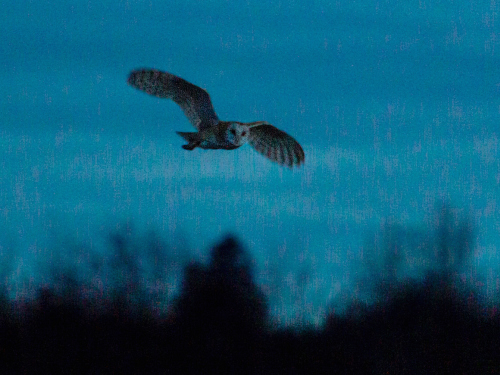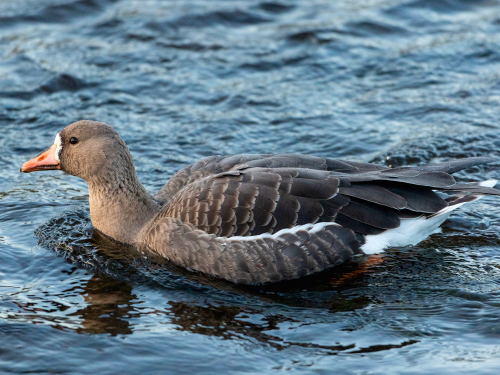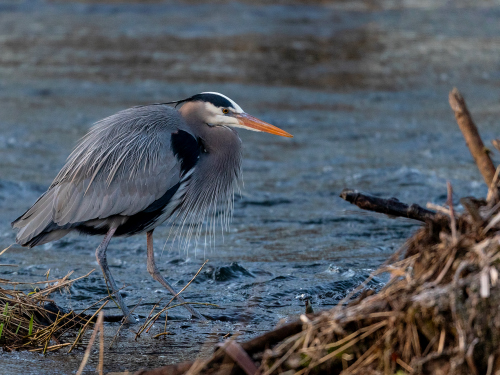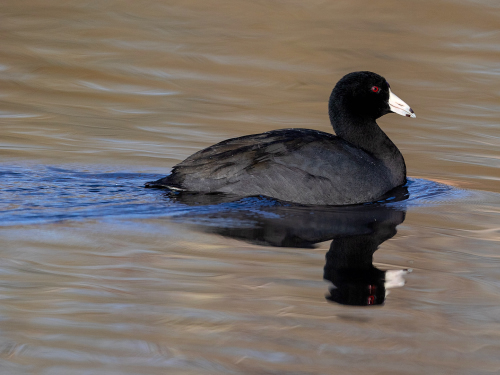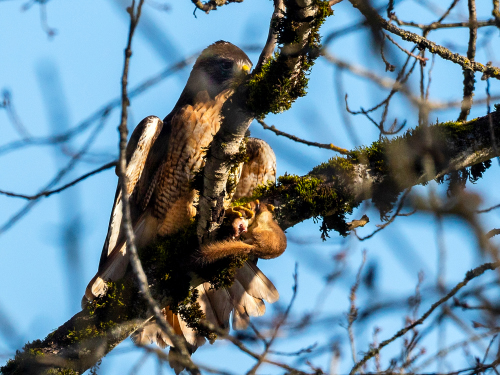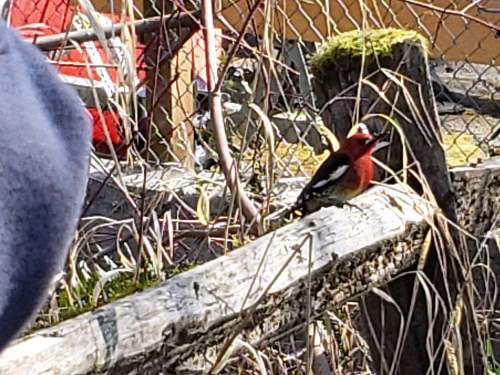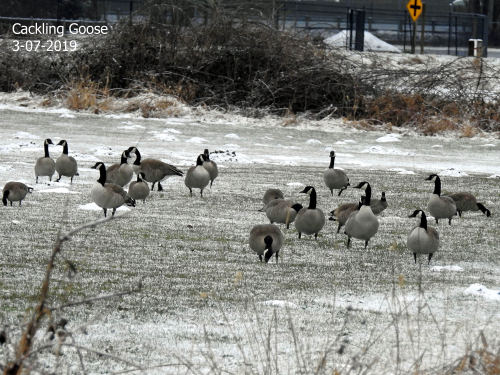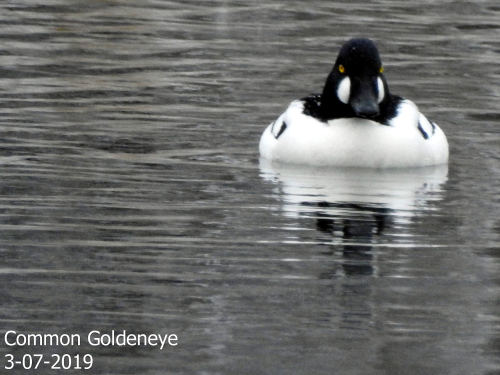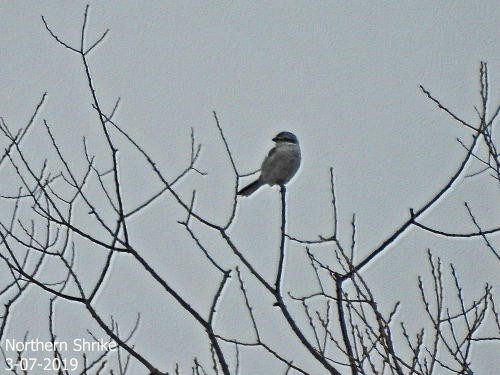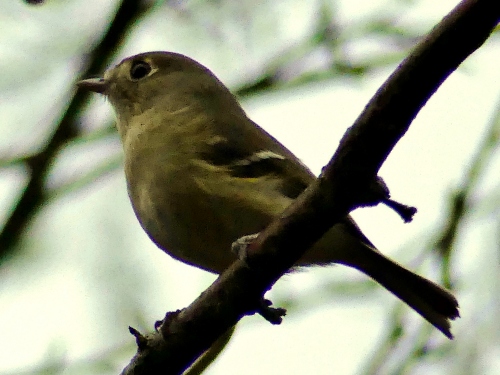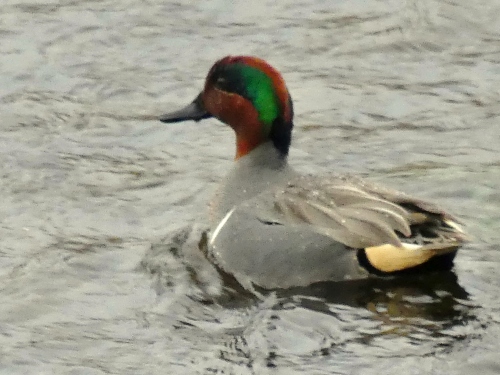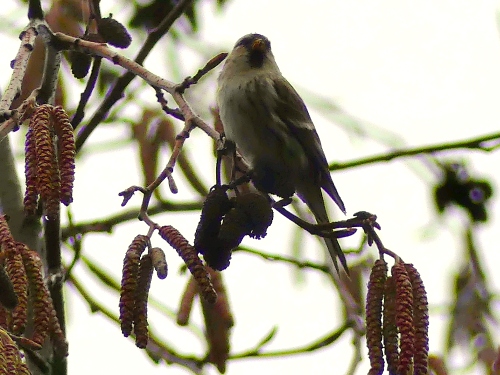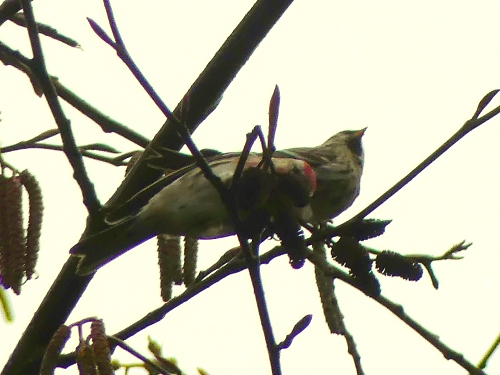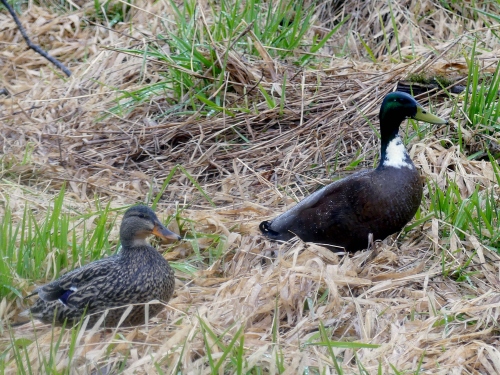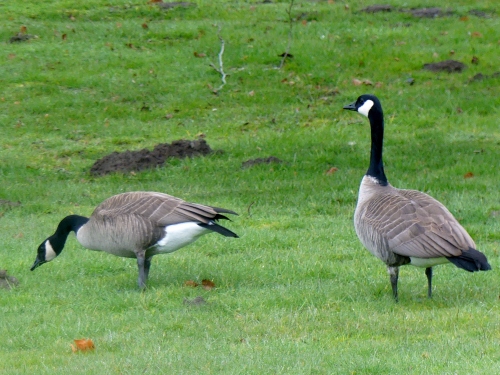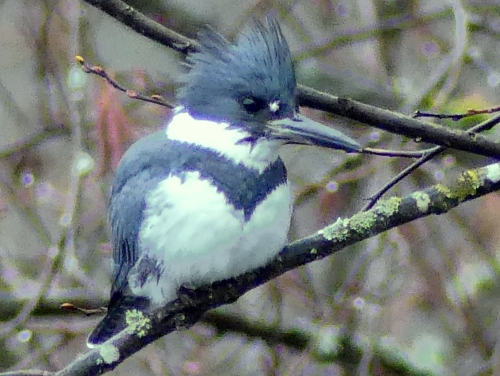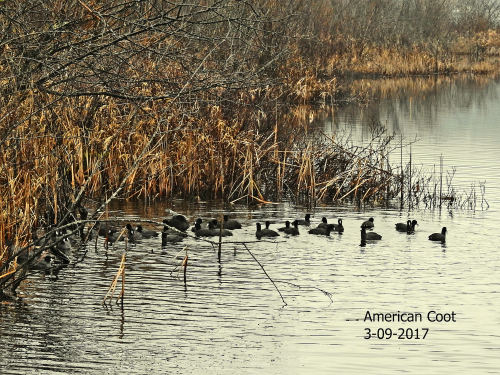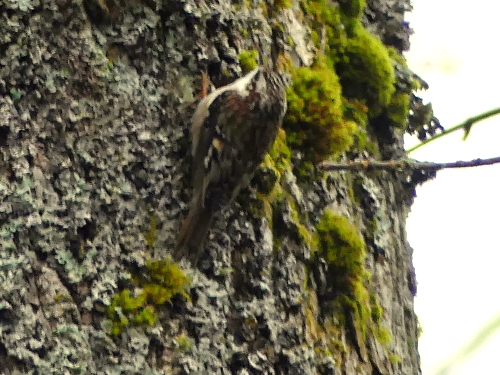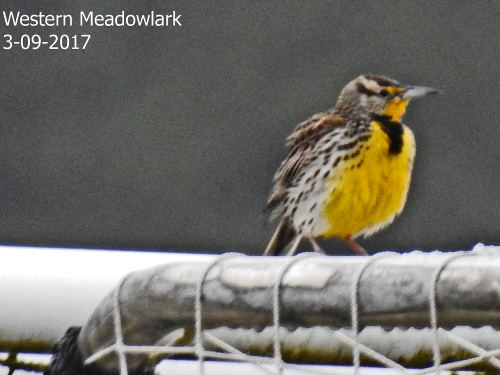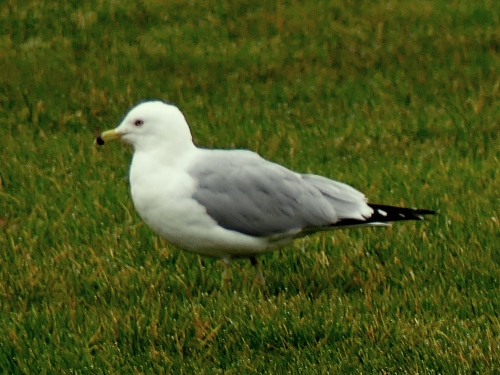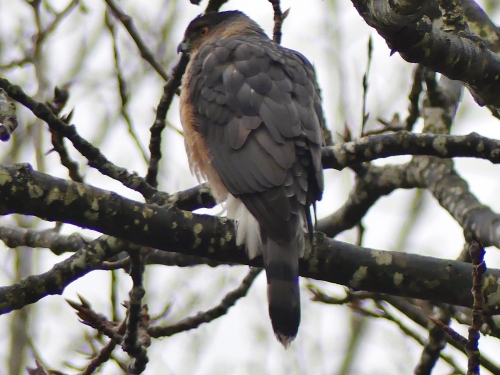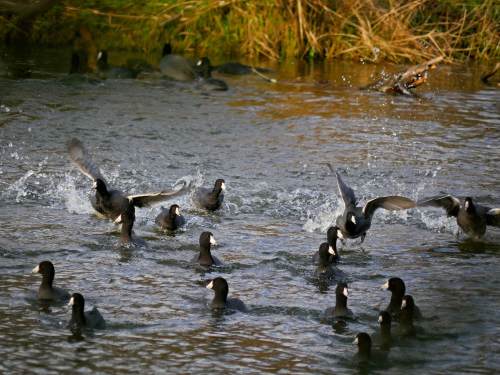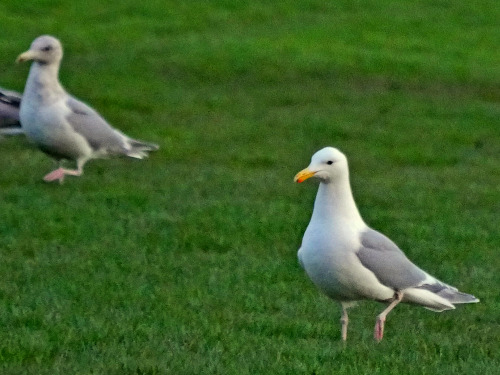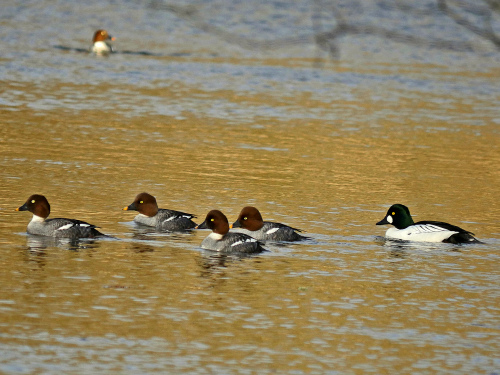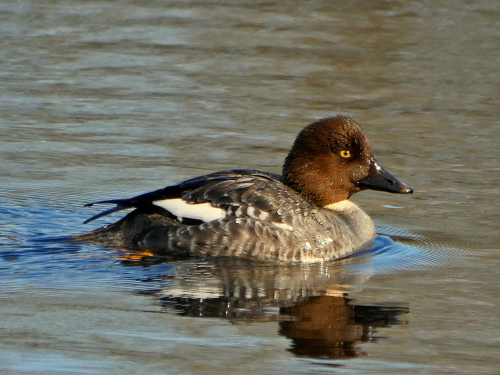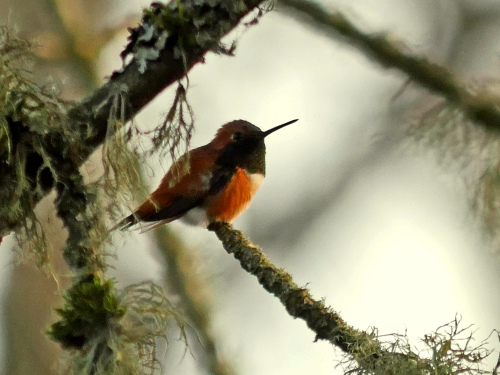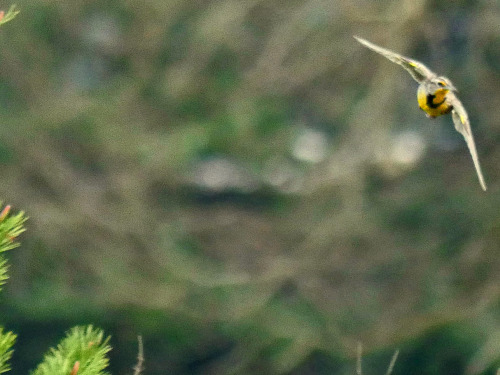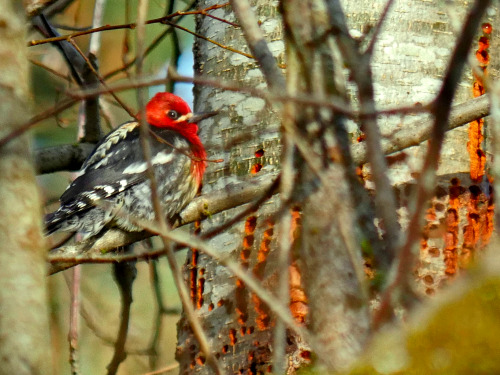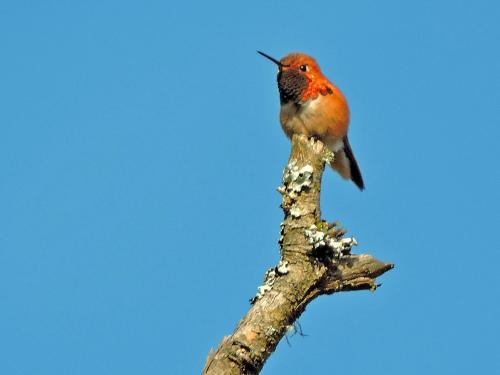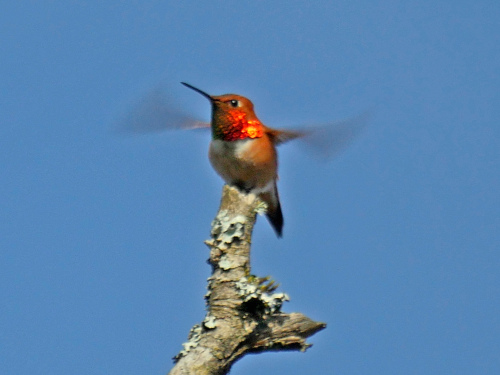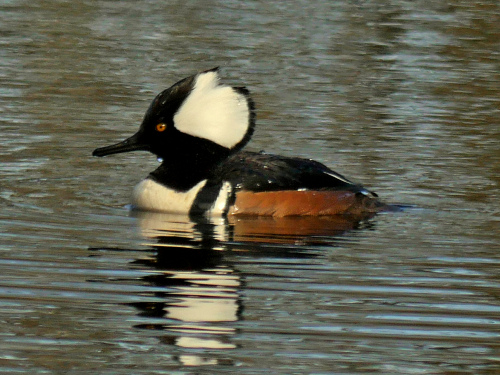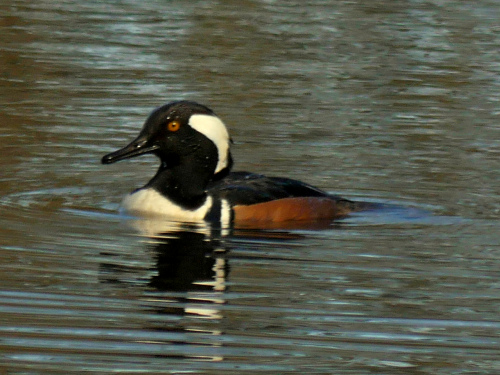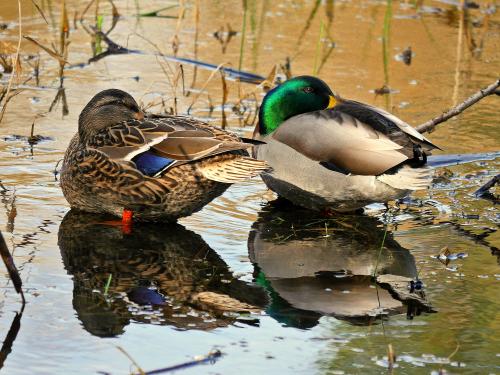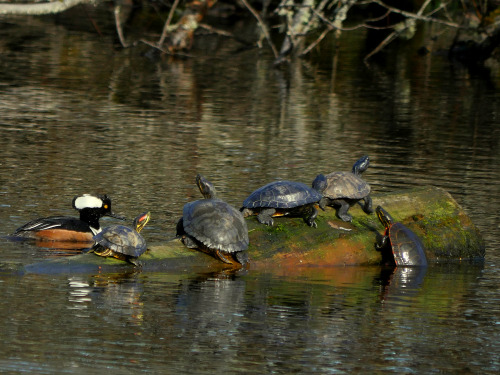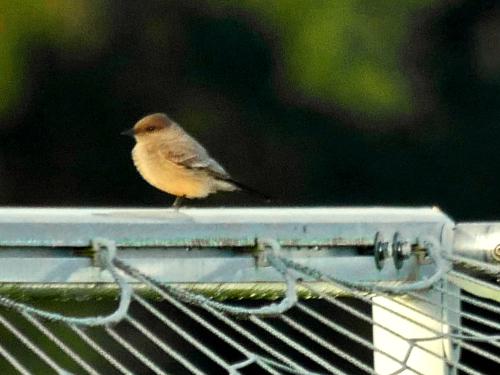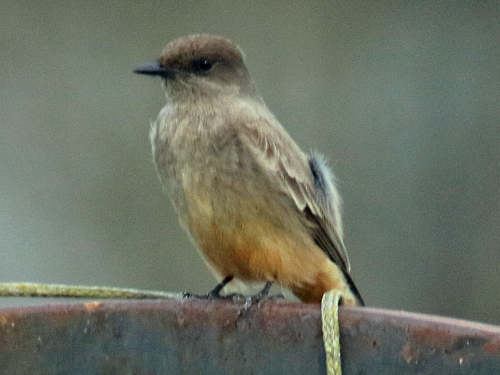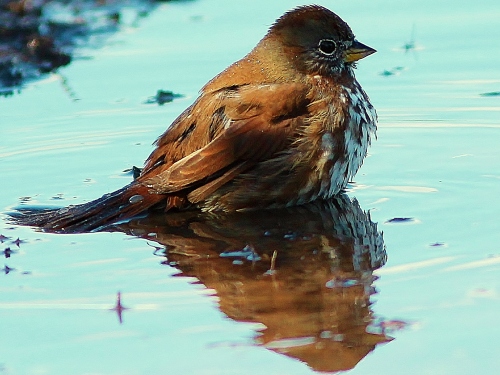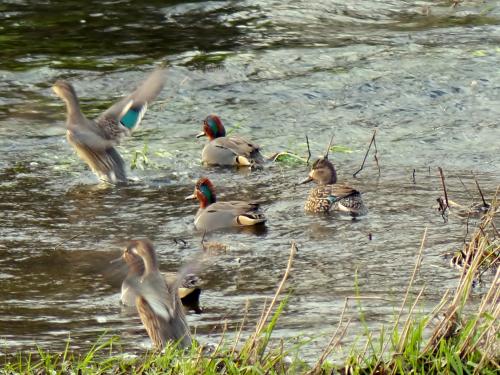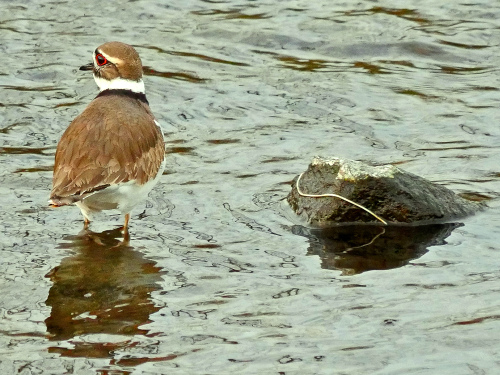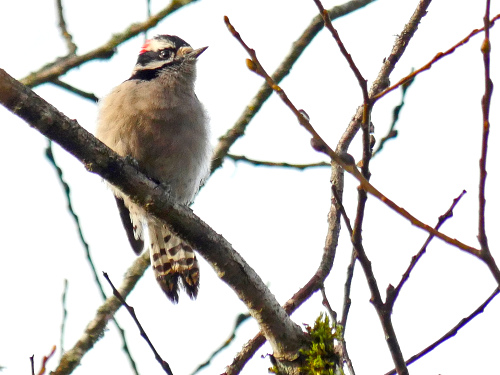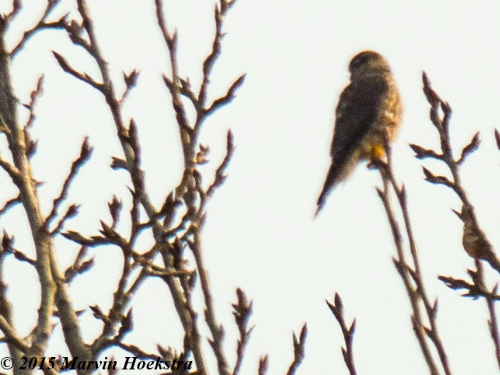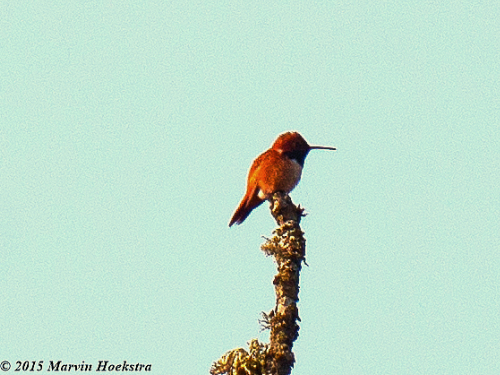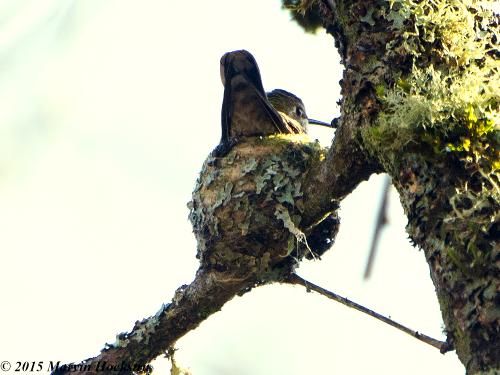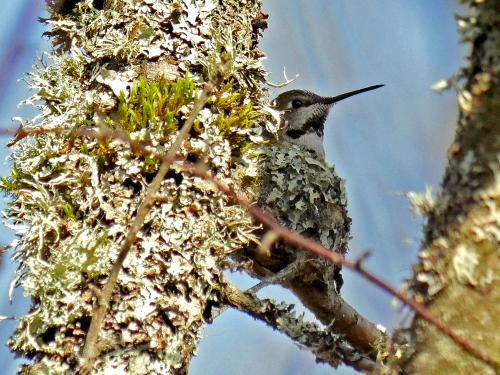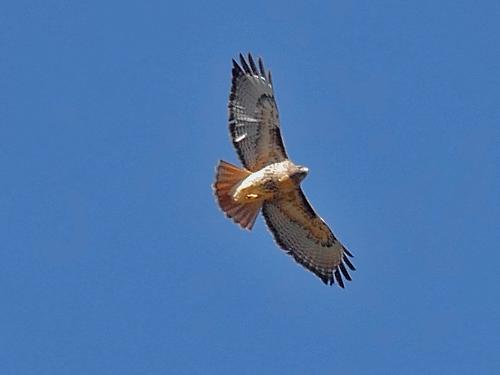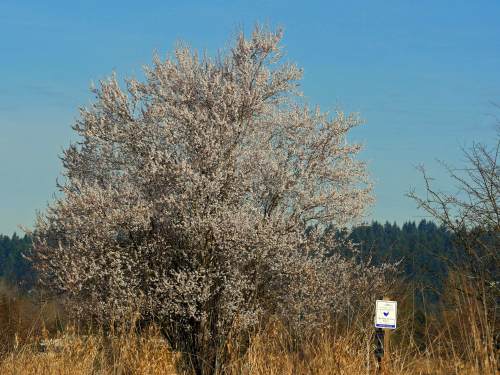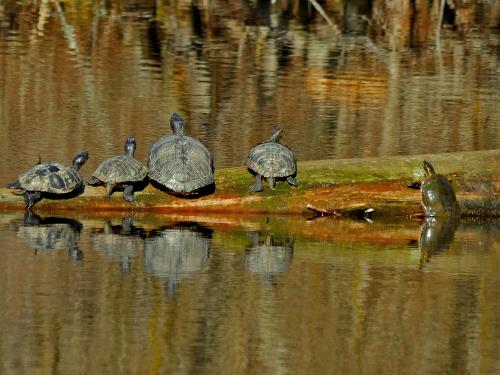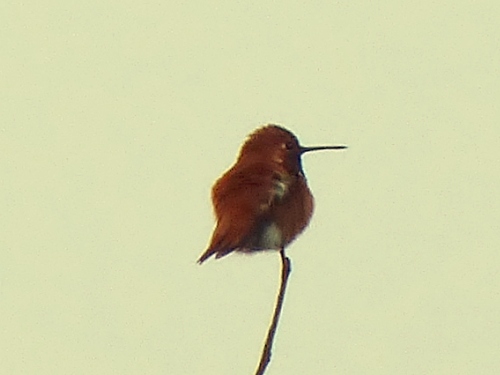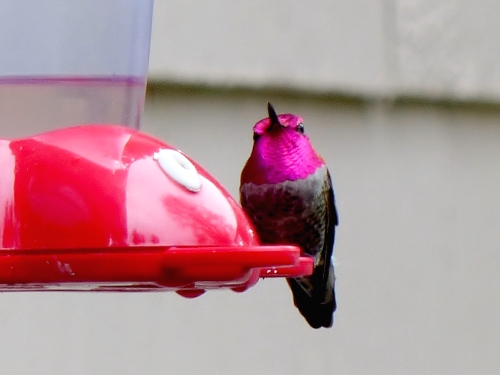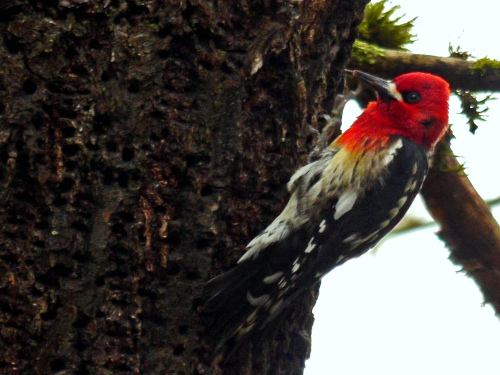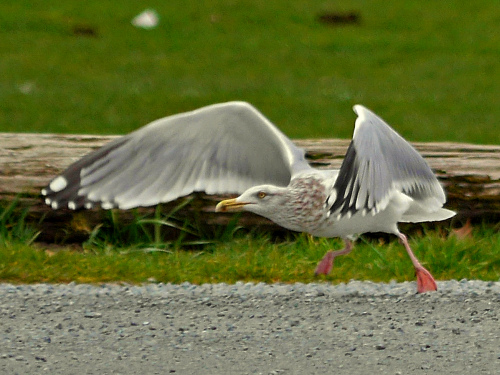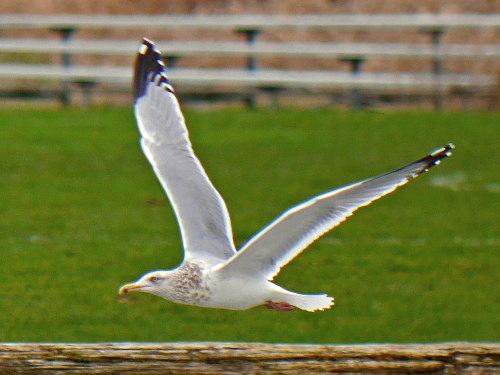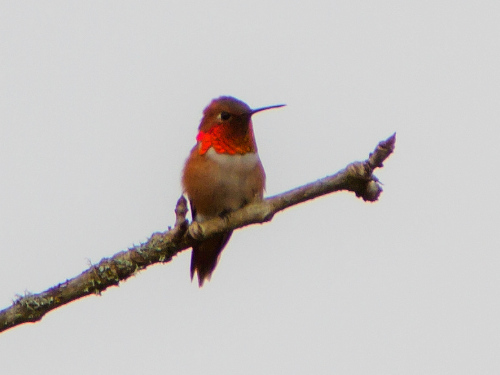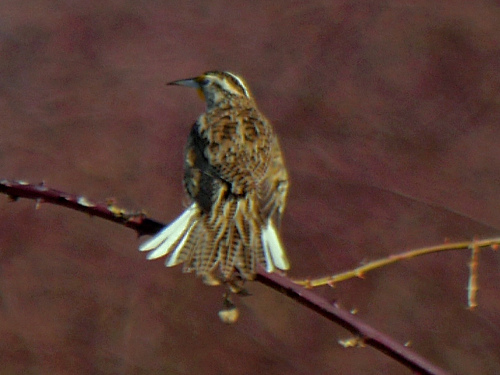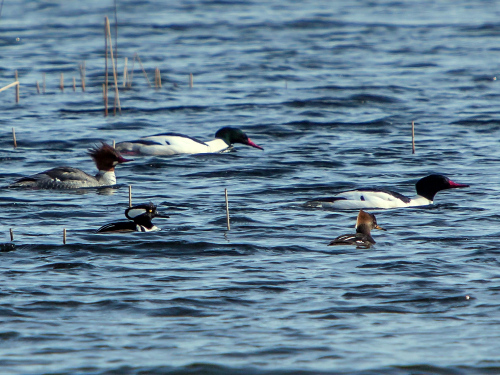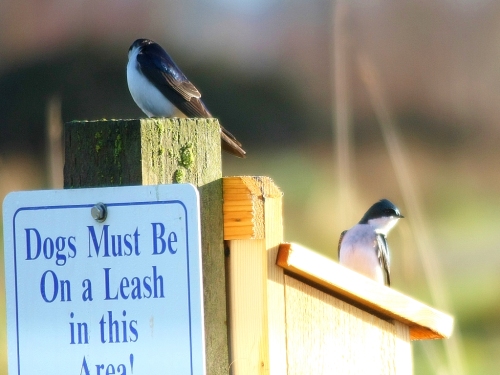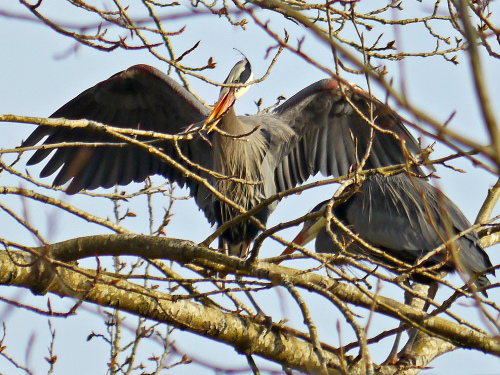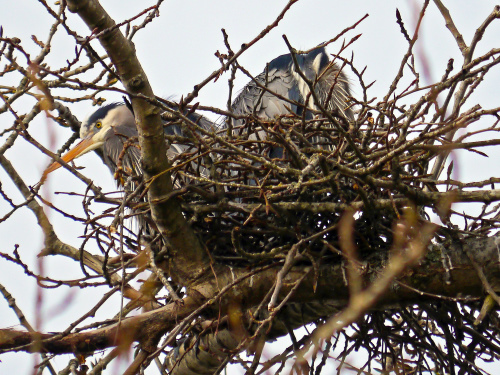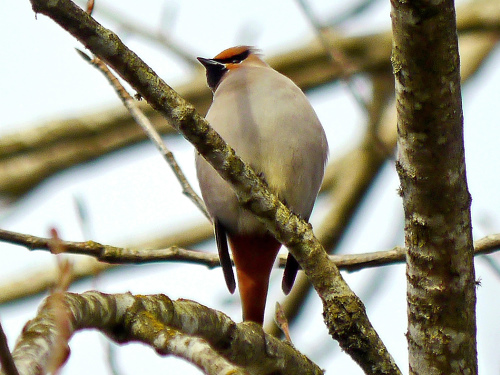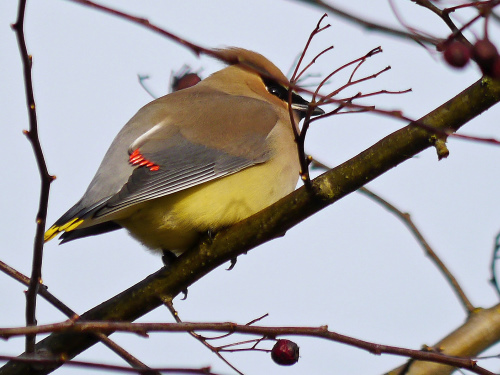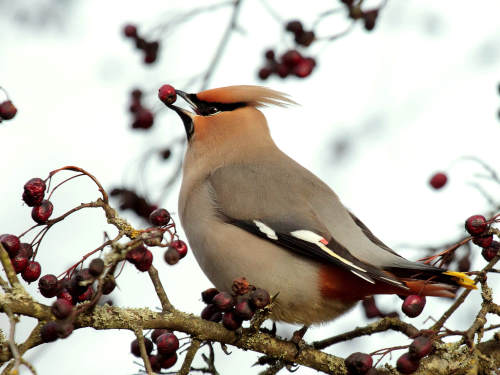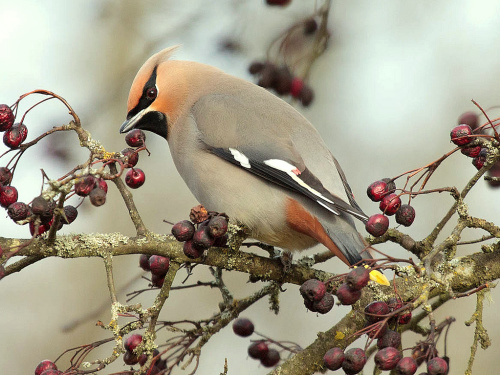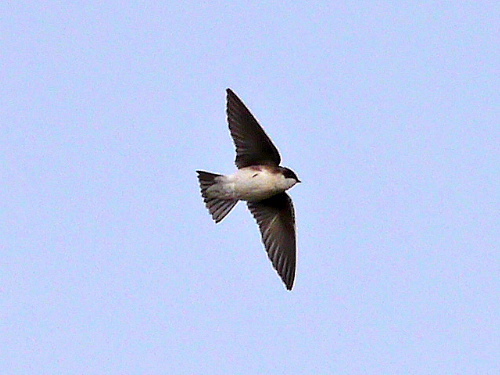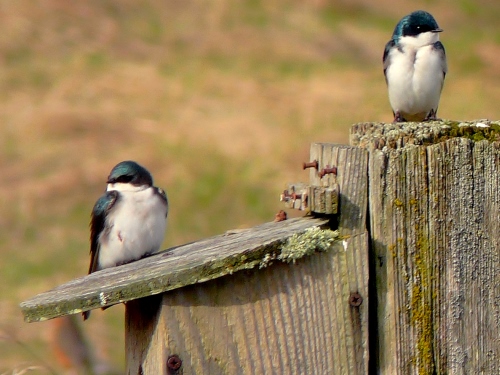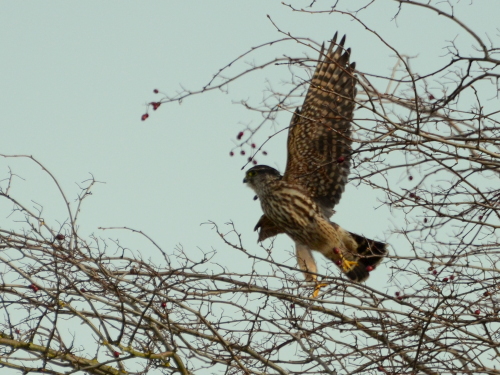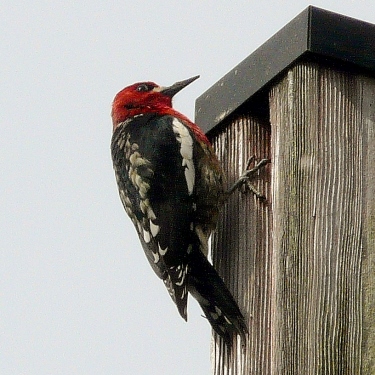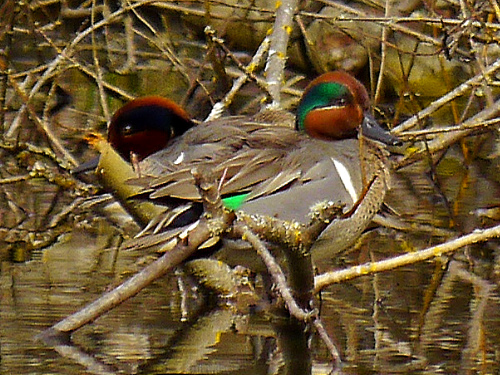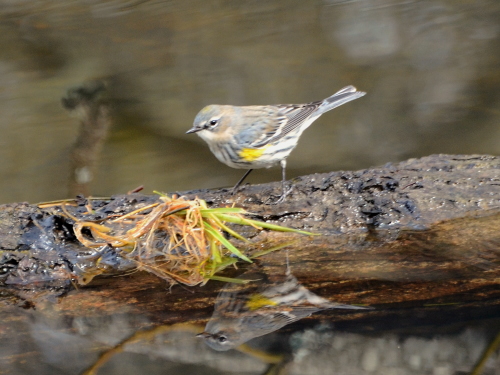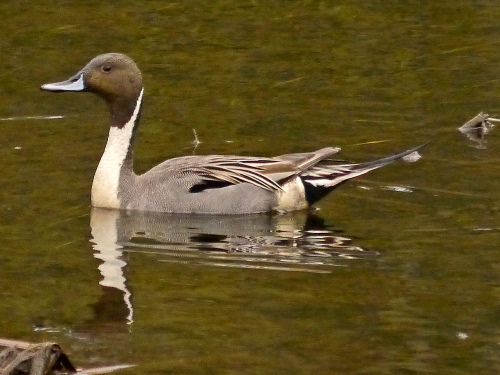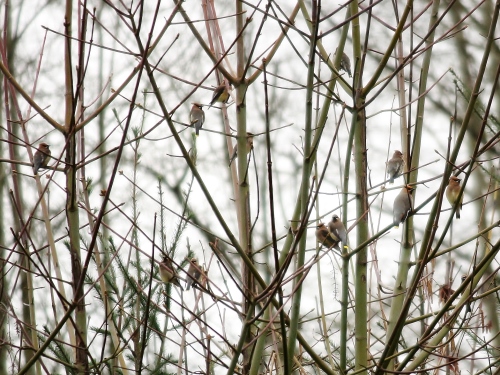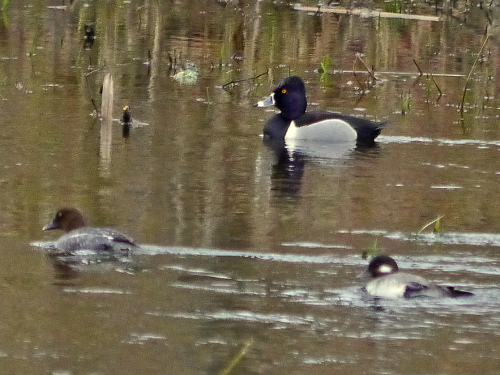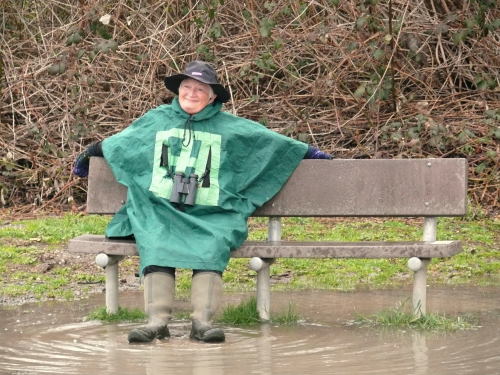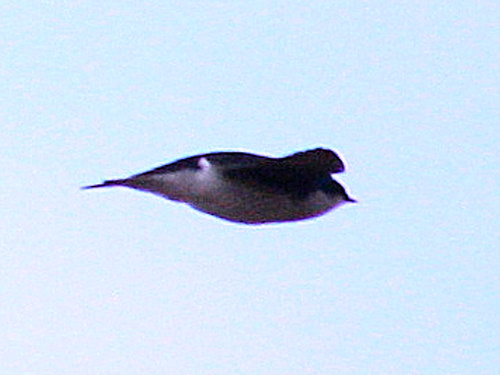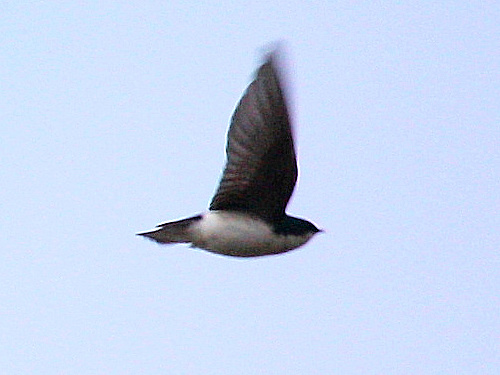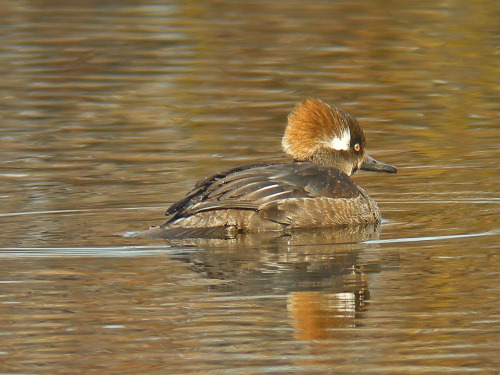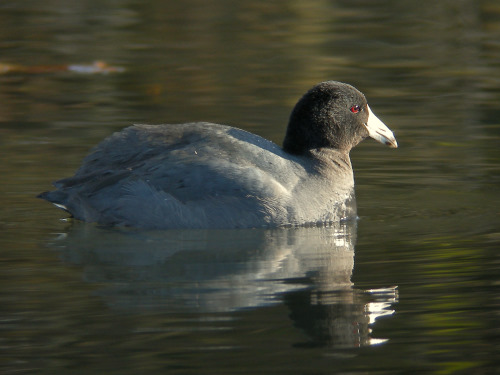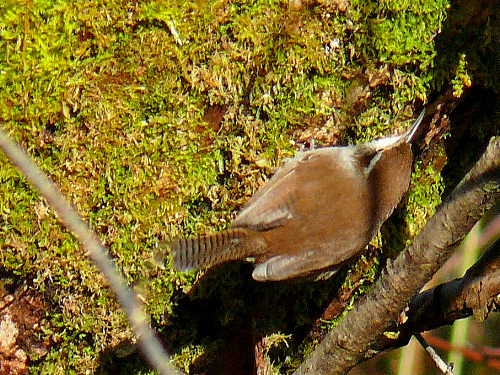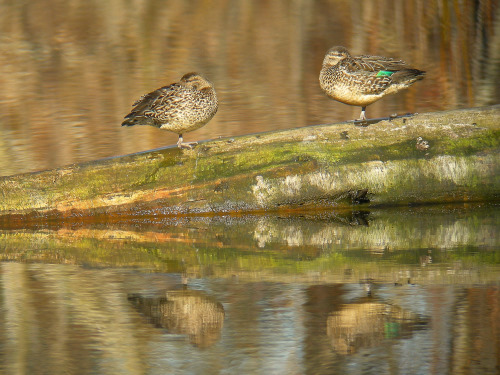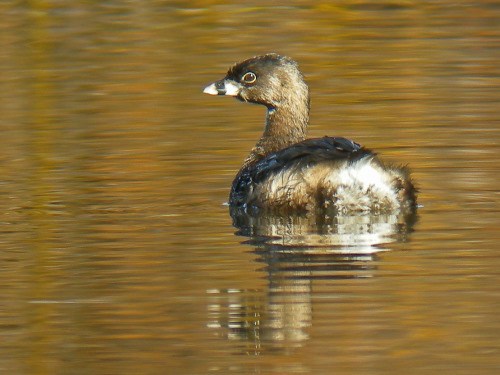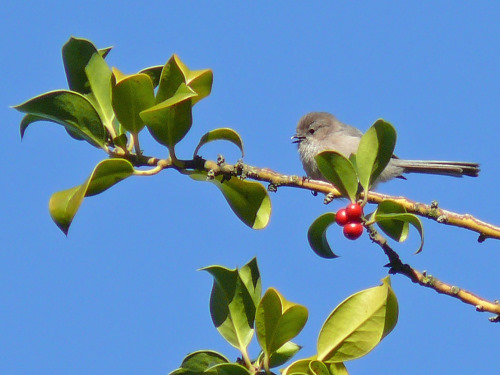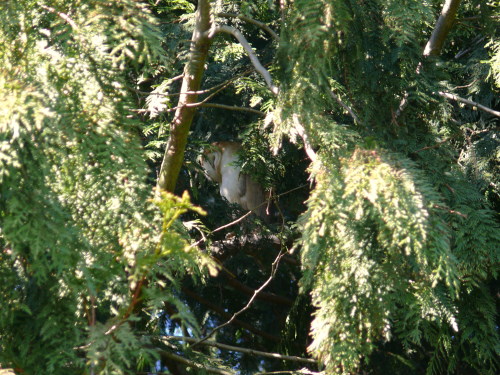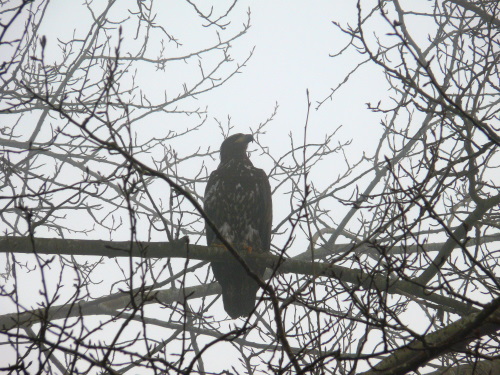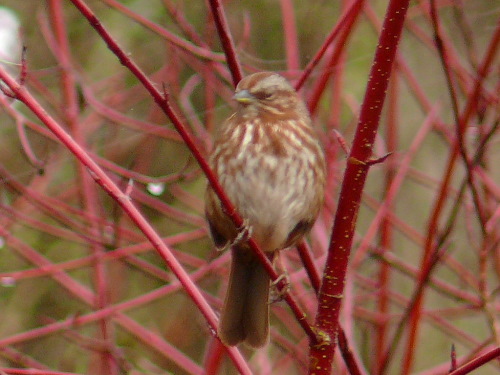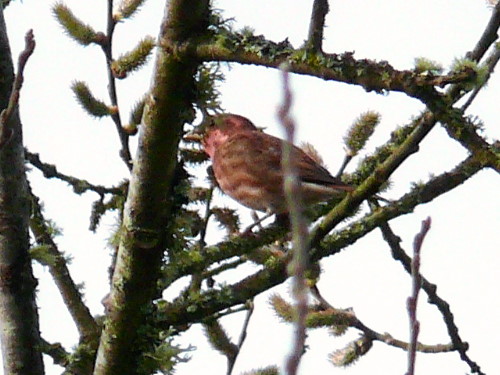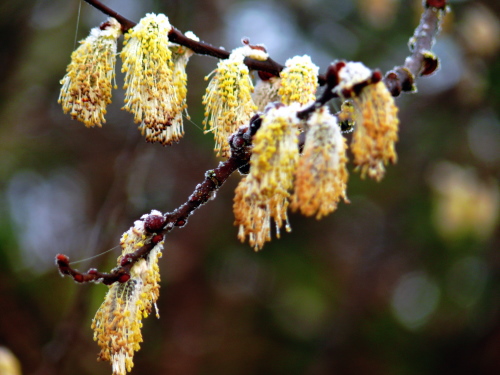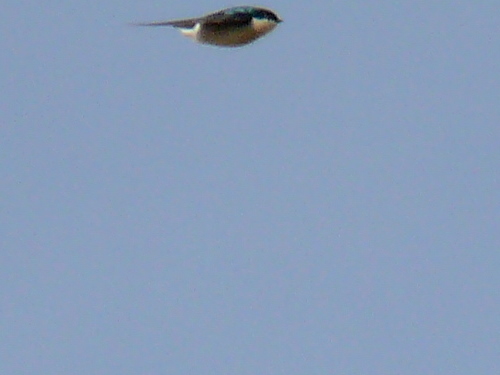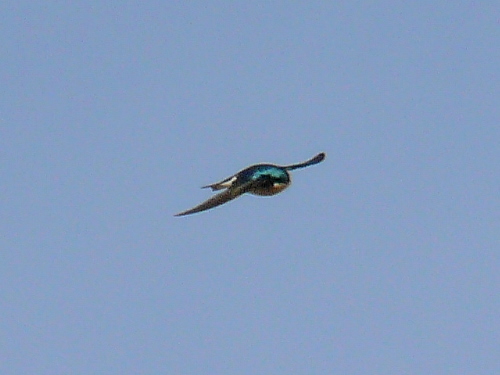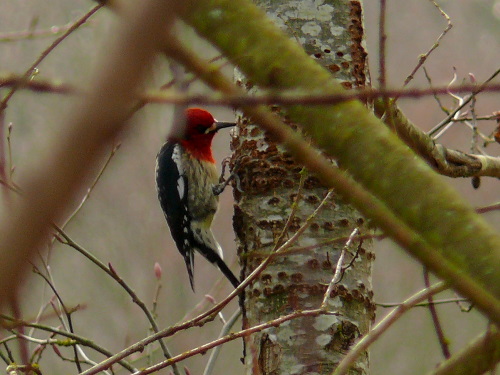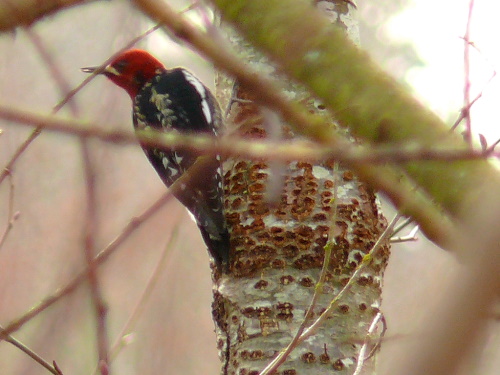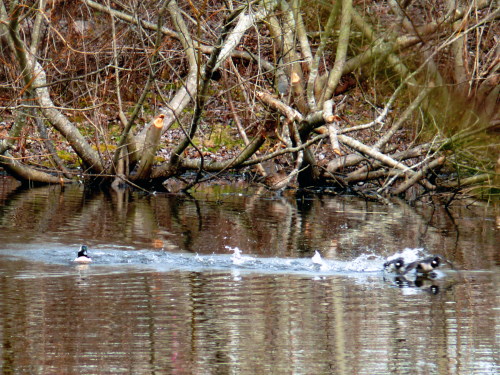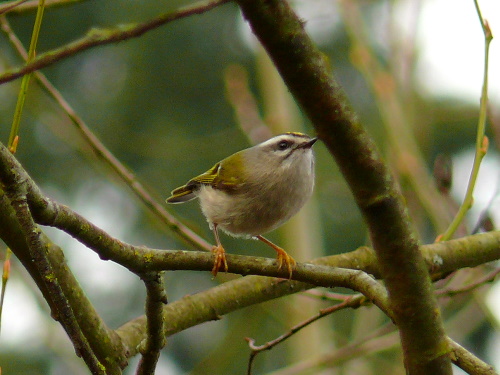Prev |
Bird Sightings Week 10
|
Next |
Rarities for Week 10:
| ...Barrow's Goldeneye | 08-Mar-12 | Continuing from 23-Feb-12 |
| ...Iceland Gull | 07-Mar-13 | Continuing from 21-Feb-13 |
| Long-eared Owl | 07-Mar-01 | Observed by a regular dog walker named Lillah |
| ...Bohemian Waxwing | 08-Mar-12 | Continuing. One bird with a large flock of Cedar Waxwings. Observed 28-Feb through 10-Apr-12 |
| ...Redpoll | 08-Mar-18 | ...Continuing irruption, first noted 04-Jan-18. Four along slough trail in alders. |
| Redpoll | 10-Mar-22 | Five east of the weir in alders |
Report for March 5, 2025 Birding at Marymoor
| It was a flat morning, with a flat gray sky. We did more birding-by-ear than actually seeing birds, or at least so it felt. Not a bad day, not really. At this time of year, there is so much anticipation of new arrivals that it's easy to feel disappointed. It always feels like things are late, but so far nothing is late. If anything, birds are arriving towards the early end of things. So I try to remind myself, "patience". It doesn't help much. Highlights:
We had a nice-looking COYOTE looking at us from across the slough. Misses today: Wilson's Snipe, Short-billed Gull, Ring-billed Gull, and White-crowned Sparrow were the only notable misses (species seen on at least half of previous years during Week 10). So we pretty much found what's supposed to be there. For the day, 56 species. For the year, adding VGSW, we're at 76 species for the surveys. = Michael Hobbs |
|
|
|
|
Report for March 7, 2024 Birding at Marymoor
| It started out frosty this morning, but it was sunny and the day warmed up nicely, with no wind and dry air. It was birdy too. Highlights:
At the Rowing Club, we tracked down a drumming RED-BREASTED SAPSUCKER. While we tried to be surreptitious in getting looks, a second sapsucker landed on the fence rail within eight feet of us, and the two birds remained still for at least a minute. We got cell-phone photos! Misses today included Rock Pigeon, Short-billed Gull, Ring-billed Gull, Glaucous-winged Gull, Northern Shrike, Tree Swallow (seen 17 of last 28 years), Bushtit, Purple Finch, and Pine Siskin. Despite that long list of misses, we did have 55 species plus the unidentified gulls. Our 2024 list is at 76 species. Possible arrivals expected or semi-expected in the next two weeks include Rufous Hummingbird, Say's Phoebe, Tree Swallow, Violet-green Swallow, Mountain Bluebird, and Savannah Sparrow. = Michael Hobbs |
|
|
|
|
|
|
|
|
|
|
Report for March 9, 2023 Birding at Marymoor
| It was below freezing when we began at 6:30 this morning and it took its time warming up. But it really wasn't too bad; no wind or precipitation, no fog, some light though the clouds darkened during the morning. We had our first real Dawn Chorus of the year, and it was really birdy until we got to the Lake Platform. From there on, it was rather quiet. Highlights:
Misses today included Short-billed Gull, Cooper's Hawk, Northern Shrike, Tree Swallow, Bushtit (though may have heard some), House Finch, and Pine Siskin. For the day, 54 species plus the Ring-necked Pheasant. In the next two weeks we should have Band-tailed Pigeon, Turkey Vulture, Say's Phoebe, Hutton's Vireo, Tree and Violet-green Swallows, Mountain Bluebird, and Savannah Sparrow either arriving back or passing through. Can't wait. = Michael Hobbs
|
Report for March 10, 2022 Birding at Marymoor
|
Sunny, windless, delightful – except for the 25 degree starting temperature. Brrr. Turned out to be a really nice day, and quite birdy. We got our first spring migrants!
Highlights:
A late scan of the lake turned up several RING-NECKED DUCKS and a couple of HORNED GREBE. A late stop back at the East Meadow featured a NORTHERN SHRIKE looking sharp just east of the Viewing Mound.
Misses today included Short-billed Gull, Ring-billed Gull, Cooper’s Hawk, and Marsh Wren
For the day, 62 species – our first survey of 2020 with 60+. For the year, we’re at 83 species.
= Michael Hobbs
|
Report for March 11, 2021 Birding at Marymoor
|
A gorgeous day today, and some really good birding. This is still early March, so there weren’t any new spring migrants yet, but there was plenty to see. The morning started out at 29 degrees, under clear skies, and warmed to 46. No wind, and good light most of the time too. We again split into two groups to keep the group size small for COVID; Jordan led the other group (THANK YOU).
Highlights:
A late scan of the lake turned up four RING-NECKED DUCK and 2 HORNED GREBE. I was also able to confirm that the flock of hundreds of AMERICAN COOTS has disappeared/dispersed. We did see at least a couple of dozen Coots in the slough and along the edges of the lake, but no big flock. The big flock had been present for the whole winter, and was being preyed on heavily by the (at least) two pairs of BALD EAGLES. Perhaps the flock size dropped too low to make flocking a reasonable refuge from the eagles.
Misses today included Mew Gull, Ring-billed Gull, and Yellow-rumped Warbler.
My group had 62 species, Jordan’s had 58. Adding in birds from predawn, and the late scan of the lake, we had a whopping 68 species for the day combined. Three FOY brings us to 87 species for 2021.
= Michael Hobbs
|
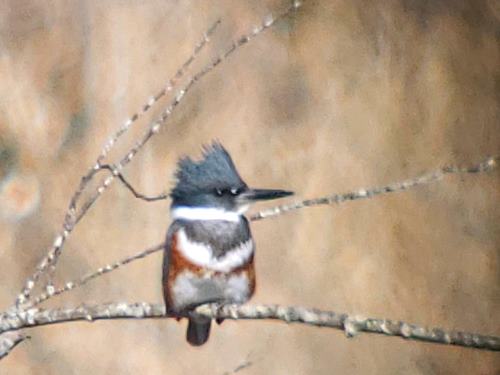
Female Belted Kingfisher. Photo by Michael Hobbs 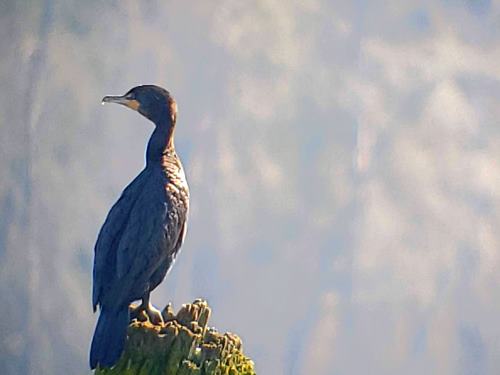
Double-crested Cormorant. Photo by Michael Hobbs |
Report for March 5, 2020 Birding at Marymoor
|
It was a rather chilly 35 degrees to start, but there was only a thin overcast and no wind, which made for a beautiful and birdy day.
Highlights:
Huge chorus of Pacific Tree Frogs predawn. One silent Bullfrog at Rowing Club.
Misses today were minimal: Greater Scaup, Cooper’s Hawk, House Finch, and Purple Finch.
For the day, 62 species.
= Michael Hobbs
|
Report for March 7, 2019 Birding at Marymoor
| In the Extended February Edition of Marymoor Surveys ™, we had SNOW. It was snowing hard when I arrived at 6:00 a.m., and it kept snowing until nearly ten. Probably an inch of snow fell, but it melted almost as fast as it fell, so there was never more than about a 1/2 inch on the ground. We had some rain after that, and finally fled the when we faced the awful terror of seeing or own shadows. So unaccustomed we are to those dark ninja stalkers that follow our every move that we had to desperately escape a little before 11:00.
The birding was fairly typical of this time of year, with no signs of early spring. Highlights
Singing birds included Anna’s Hummingbird, American Robin, Pacific Wren, Marsh Wren, Bewick’s Wren, Purple Finch, Pine Siskin, Spotted Towhee, Fox Sparrow, Song Sparrow, Fark-eyed Junco, and Red-winged Blackbird. Misses today included Ring-necked Duck, Virginia Rail, Mew Gull, Cooper’s Hawk, Red-breasted Sapsucker, Tree Swallow (seen 13 of past 22 years during Week 10), Bushtit, and HOUSE FINCH. For the day, 54 species. Nothing new for 2019 (maybe next week). == Michael Hobbs |
|
|
|
|
|
|
|
Report for March 8, 2018 Birding at Marymoor
| We were in and out before it actually RAINED, though we did have mizzle turning into a soaking drizzle this morning. After the last couple of days of nice weather, it was a bummer. But contrary to expectations, it was pretty birdy for the first several hours.
Highlights:
Yes, at Marymoor this spring, we only get “common” finches. We had ZERO House Finch, Purple Finch, Pine Siskin, or American Goldfinch today, ONLY the COMMON REDPOLLS. This is just the 6th record of the species at Marymoor, but already the 3rd for 2018. These guys were silently working the catkins just over the main slough trail, and most of us presumably walked under them without noticing. Luckily, Sharon was back from travels, and she was playing “caboose” as usual, trailing 30 yards back, and spotted them. Other misses included Hooded Merganser, Rock Pigeon, Virginia Rail, Cooper’s Hawk, Bushtit, and Eastern Gray Squirrel, but we did have the first MUSKRAT of 2018. For the day, 57 species. For the year, adding 4, we’re up to 85 species. The next couple of weeks should bring the first real wave of spring migrants. == Michael Hobbs |
|
|
|
|
|
|
|
Report for March 9, 2017 Birding at Marymoor
| Brian, Sharon & I filled in for a traveling Michael today at Marymoor. It was an overcast day, but the rain didn’t really pick up until late in the day, and even then it wasn’t that heavy. We had many hopes for spring arrivals that weren’t fulfilled, but overall it was a birdy day with some nice finds along the way for the 11 of us present.
Highlights:
Finches were notably absent for much of the day — finally at the Rowing Club we picked up a small flock of Pine Siskins and a single Purple Finch. No House Finch or Am. Goldfinch to be found anywhere. For the day, 60 species. Matt Bartels |
|
|
|
|
|
|
|
Report for March 10, 2016 Birding at Marymoor
| Today was definitely one of those days where, if we got to pick the day of the week for the survey, we would have chosen a different day. But we go out EVERY Thursday, regardless. Heedless, even. Blustery and squalling, sun breaks on the side. Sometimes even winder than “blustery”. At least the rain we got, while often horizontal, was not hard. The wind WAS often hard, though not gale force. Several trees fell or were damaged overnight, including the old willow near the East Footbridge which almost completely blocked our path. All in all, it made the birding difficult, but by no means impossible.
Highlights: Cackling Goose Several distant flocks Surprisingly, we managed 60 species today, although that included quite a few birds seen by only one or a few people. My personal list was only 54 species, for instance. Nothing new for the year. == Michael Hobbs |
|
|
|
|
|
|
|
|
|
|
|
|
|
|
|
|
|
|
|
|
|
|
|
|
|
|
|
|
Report for March 5, 2015 Birding at Marymoor
| Another glorious day. The temp. started out at 32, but even the smallest puddles had no ice. By the time we left, it was 50 degrees. Hazy sunshine all morning, and BIRDY.
Highlights: Cackling Goose One flyby flock of about 35 There were an unusually large number of BALD EAGLES, including at least 5 adults (I saw them simultaneously after the walk) and a juvenile (maybe more than one). We saw two adults fly over the heronry, which of course resulted in all of the herons taking flight. Twice I observed a juvenile eagle scatter the herons. We didn’t see any overt moves by any of the eagles to try and hunt the herons. We also saw many herons on the nests, and at least one bringing in nesting material. Two male RUFOUS HUMMINGBIRDS were seen, and both did their ‘J’-display flights. One was near the southernmost official dog swim area near the footbridge. The second was at the southeast corner of the East Meadow. As I noted above, this ties the record for earliest RUHU at Marymoor with 2014. In only four years have we had them before March 15. Our only earlier sightings of VIOLET-GREEN SWALLOW were 2002-02-28 and 2006-03-03, and it’s only our 5th year with a sighting before March 10. We had an astounding 67 species for the day. Adding EURASIAN COLLARED-DOVE, RUFOUS HUMMINGBIRD, and VIOLET-GREEN SWALLOW, our 2015 list is up to 84, I believe. == Michael Hobbs |
|
|
|
|
|
|
|
|
|
|
|
|
|
Report for March 6, 2014 Birding at Marymoor
| We were dressed in our meteorological armor – rain coats, rain pants, rain hats, tall boots, snorkels, sandbags – to survive the predicted torrential rains and howling winds. Thus encumbered, we tromped around Marymoor under skies that were partly blue, with only a few puffs of wind, and a bit of mist and drizzle. It was nearly 60 degrees by late morning (and not much cooler to start). If we hadn’t known what was supposed to be coming, we would have thought it was a nice morning.
Unfortunately, the birds apparently also heard the weather reports and mostly remained hidden and quiet. There was also high water, which often displaces birds. Today, it seemed to push some birds out more than it pulled other birds in. The water isn’t TOO deep; part of the boardwalk had about 5” of water, and there were puddles on some of the Interpretive Trail, but there weren’t any areas closed due to flooding. Highlights: 6 species of waterfowl Compared with 12 last week Dasha Gudalewicz photographed a male RUFOUS HUMMINGBIRD yesterday, March 5th; we may well have seen the same individual today. This is the EARLIEST Rufous Hummingbird sighting ever at Marymoor. Our only other sighting this week of the year was March 9, 2005. Usually, our first Rufous is 1-2 weeks later. Contrary to lore, we could find NO open Salmonberry blossoms yet. Previous years, we’ve pretty much always had the first RUHU coincide with the first blossoms, leading to the True Marymoor Fact that they overwinter inside salmonberry buds. I forgot to mention in last week’s post just how many species are singing/displaying/etc. right now. Today’s list: Great Blue Heron bringing sticks to nest, RUFOUS HUMMINGBIRD J-display flight, Northern Flicker “singing”. Singing: Black-capped Chickadee, Brown Creeper, Pacific Wren, Marsh Wren, Bewick’s Wren, Golden-crowned Kinglet, Ruby-crowned Kinglet, American Robin, Song Sparrow, Dark-eyed Junco, Red-winged Blackbird, House Finch, Purple Finch. Last week, we had Spotted Towhee and Fox Sparrow singing too, and Anna’s Hummingbird displaying. We also heard LOTS of Pacific Tree Frogs today. For the day, 50 species. With RUHU, our year list is up to 85 species, I believe. == Michael Hobbs |
|
|
|
|
|
|
|
|
|
|
Report for March 7, 2013 Birding at Marymoor
| It was moistly misty and drizzly pretty much all morning, though I’m not sure it ever got to “rain”. And despite my fears, it actually got light enough to see not long after our 6:30 a.m. official start time. It turned out to be a fairly birdy and interesting morning.
Highlights: Cackling Goose After 4 week absence, maybe 50 Fitting the pattern of recent years, we had huge flocks of CACKLING GOOSE all through November, December, and January. Then we had none for four weeks before today when a two-part flock came in, with one flocklet landing and the other continuing on. The 25-or-so birds on the ground were of 2-3 subspecies. Our huge winter flocks are almost 100% pure minima subspecies, so I believe these spring sightings are birds that wintered somewhere south of here and are part of different populations. From the neck band data, our winter birds are from the Yukon Delta area of Alaska. Many species were singing today. Of note were GOLDEN-CROWNED KINGLET singing at the Rowing Club, RUBY-CROWNED KINGLET singing along the slough, fragments of GOLDEN-CROWNED SPARROW song at the Compost Piles, a brief bit of FOX SPARROW song near the weir, and HOUSE FINCH singing in a couple of places. We had a couple of RIVER OTTERS seen from the lake platform. For the day, 59 species. TREE SWALLOWS were seen as early as Sunday, and I had two NORTHERN SHOVELER on Monday, bringing our year total to 85 species. == Michael Hobbs |
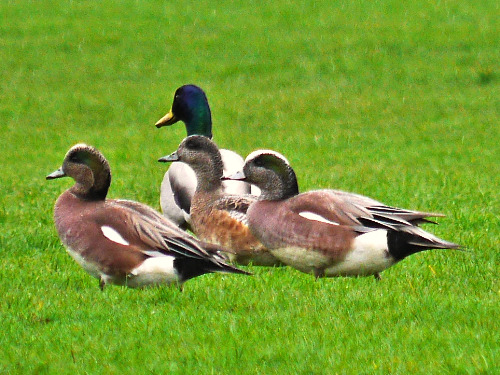 American Wigeon and a Mallard. Photo by Ollie Oliver 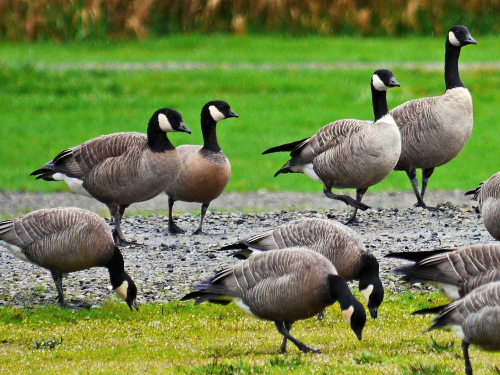 At least 2 subspecies of Cackling Goose. Photo by Ollie Oliver |
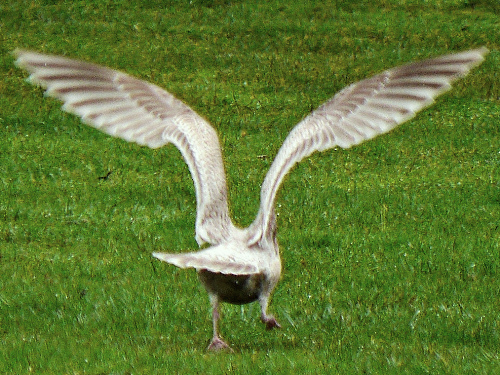 Juvenile "Thayer's" Iceland Gull. Photo by Ollie Oliver |
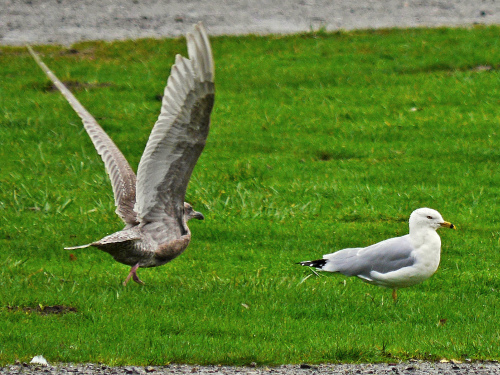 Adult Ring-billed Gull, looking small next to juvenile Glaucous-winged Gull. Photo by Ollie Oliver |
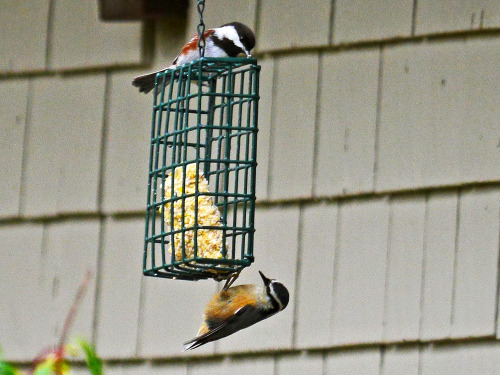 Chestnut-backed Chickadee and Red-breasted Nuthatch. Photo by Ollie Oliver |
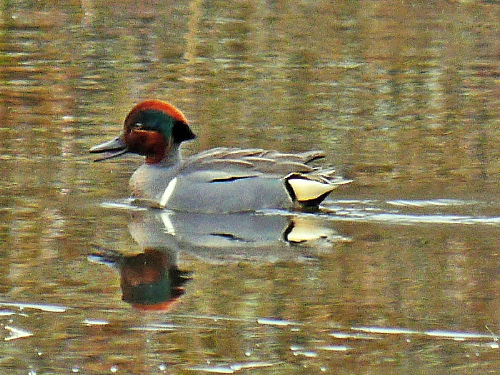 Green-winged Teal displaying for a female. Photo by Ollie Oliver |
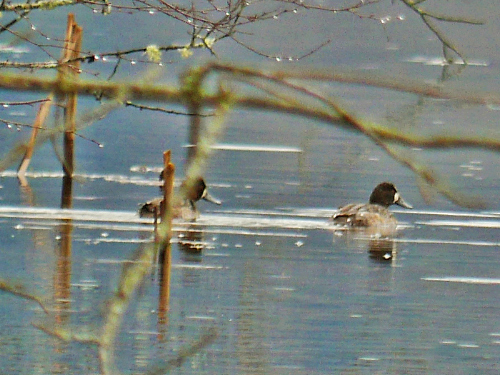 Greater Scaup. Photo by Ollie Oliver |
|
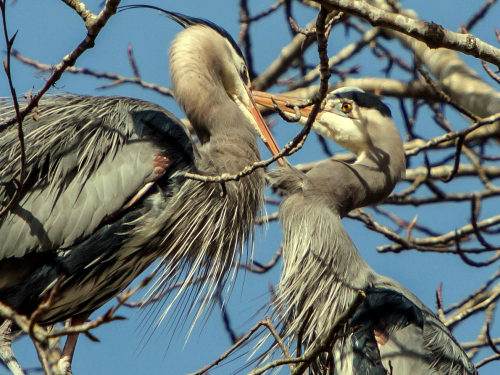 Great Blue Herons pair grooming on the nest, 2013-03-04. Photo by Dasha Gudalewicz |
|
Report for March 8, 2012 Birding at Marymoor
Report for March 10, 2011 Birding at Marymoor
|
We were amazingly blessed with good weather this morning. We had one squall at about 7:15 a.m., but otherwise the weather was delightful. Usually overcast and a bit of a breeze, but pleasant temps and no rain (it all fell overnight). The birds were active and singing, though we didn't often get good looks at things. |
|
|
|
|
Report for March 11, 2010
|
The breezy, wet , chilly weather kept the number of birders down to |
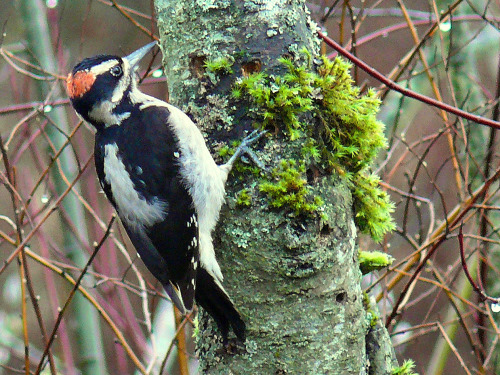 Male Hairy Woodpecker. Photo by Ollie Oliver |
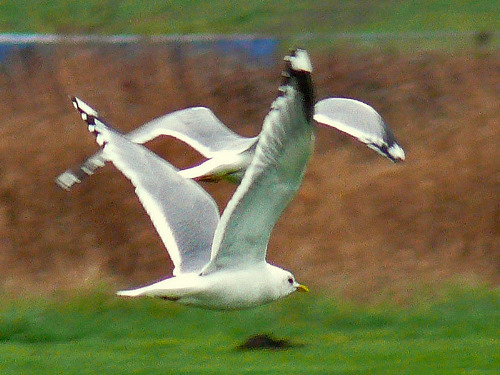 Mew Gulls. Photo by Ollie Oliver |
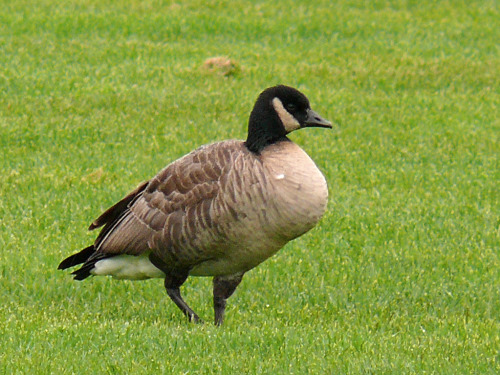 Cackling Goose. Photo by Ollie Oliver |
Report for March 5, 2009
|
Cinco de Marcho was a real stinko, as far as weather goes. Heavy rains from 5:30 a.m. until about 8:00, followed by about an hour and a half of clearing, followed by hard rain and then extremely wet SNOW. Uggh. I thought this was supposed to be spring? Anyway, with the heavy early morning rain, Matt, Brian, and Scott arrived at our starting place well soaked. Amazingly, the rain didn't deter the birders- there were 16 of us today. I almost dread what a nice day in May will bring... The birds were somewhat cooperative, though, despite a lack of spring goodies. Maybe this was our last good winter birding day or something. Highlights: Trumpeter Swan Two flew over the East Meadow A pretty good day for non-bird animals as well, though many of these were Pacific Treefrog Heard For the day, a rather surprising 54 species. For the year, I think we might be up to 82 or 83, but I'll have to total things up later. == Michael |
Ollie Oliver's Photos from March 6, when the weather was sunnier |
|
|
|
|
|
|
|
|
|
Report for March 6, 2008
|
We started out in rather heavy fog and cold weather, but the fog mostly lifted by the time we got to the lake, and the sun sort of came out. Remaining high overcast kept it from being sunny and warm like I'd hoped. It was fairly birdy, and the fog hid us from the birds about as well as it hid them from us; we got some great, close looks early on. = Michael |
|
|
|
|
|
|
|
|
|
|
|
|
|
|
|
|
Report for March 10, 2007
|
Ryan Merrill passed along some interesting sightings from early this morning. He heard Great Horned and Barn Owls near the windmill, and he heard Western Screech-Owl to the west of the park up the Bridle Crest Trail. Later in the morning, he saw a Beaver in the slough, and a Common Raven flying over the park calling. At the East Meadow, he had four Western Meadowlarks. = Michael |
Report for March 8, 2007
| We got lucky with the weather this morning. We faced only a breeze and a few showers, much better than the night-before and the afternoon-after! Eleven of us wandered around, feeling blessed, and not getting very many good looks at birds.
Highlights: Cackling Goose 2 in a small flock of Canadas flying overhead Notable singers: Meadowlarks, Fox Sparrow, Purple Finch, Ruby-crowned Kinglet, many more. Tuesday I heard a few notes out of a Northern Shrike in the East Meadow, as well as a heard-only Orange-crowned Warbler. Normally we don't see CACKLING GOOSE after the first week of February, but this is the second time we've had Cacklers during the 2nd week of March. Must be individuals who wintered further south passing through. We had a LONG discussion about a group of four scaup in the slough. They were only about 20 yards away, but they were actively diving. We finally decided that there was one Greater and the rest were Lesser. You'd think a group with four or five Master Birders plus several other good birders wouldn't have to work so hard on scaup. Today's BALD EAGLE sightings do more to confirm that there will be two pairs breeding within Marymoor this year. TREE SWALLOWS were visiting nest boxes on Tuesday; today they were just flying around. Our WESTERN MEADOWLARK sighting was absurd. We were at Dog Central, the biggest dog swim beach with the bulletin board. We wandered over towards the Dog Meadow, and Ollie thought he heard a meadowlark. We all listened. Sure enough, meadowlark song tinkled down from far to the northeast. Miraculously, Ollie noted one in flight, and we were able to make out two meadowlark-sized, yellow-fronted birds high in a cottonwood in Snag Row. We could hear singing coming from that direction. Distance - 1000 feet. I presumed we'd see them at the end of the loop, but no go. Tuesday, I had 3 chorusing in full song right over my head at the Interpretive Lot. Pacific Tree Frogs were chorusing (very loudly in the sun on Tuesday, quieter today). Some of the non-native plums and cherries are blooming, as are the Oso Berry (Indian Plum), and a few species of willow. For the day, 59 species. The week list is at least 61. For the year, I think we're up to 87 species, having added California Gull, Orange-crowned Warbler, and Pine Siskin since last Thursday. = Michael |
|
Prev |
Bird Sightings Week 10
|
Next |

